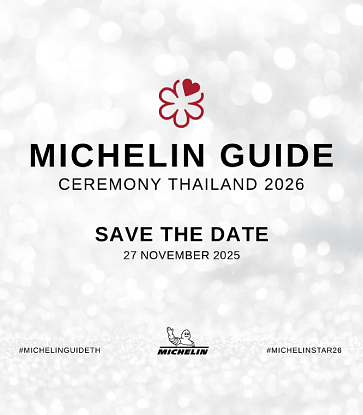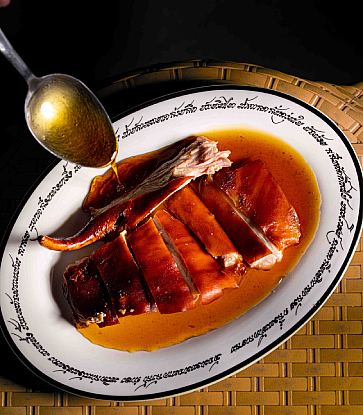Most people can tell the difference between crustaceans, such as prawns and lobsters, or between shellfish, like mussels and scallops. However, the same cannot be often said about fish. Sure, most people can recognise salmon by its unique colour, and many know textures and flavours that distinguish oily and white-fleshed fish. But how many could discern the differences between, say, a sea bass and a grouper?
One could point to any number of reasons for this. It could be the fact that in this supermarket era, when fish is increasingly sold filleted, frozen, and often pre-cooked, one piece starts to look very much like the other. It could be because those pre-cooked, pre-packaged fishes undergo similar industrial and standardised processes, during which the subtle differences are erased. Marketers also have a lot to answer for. The Wikipedia page for “red snapper” describes the wide variety of essentially unrelated species all being sold under that name. Beyond marketing, there is also just old-fashioned malfeasance and mislabeling, with wilfully incorrect identification of fish plaguing global markets.

Often we see consumers preferring exotic species imported from foreign countries. In venues all around the world, restaurateurs are more than happy to show off their bluefin tuna flown in fresh from Tsukiji Market, marbled Norwegian salmon, lily-white snowfish from the Chilean Antarctic, but far less willing to highlight locally sourced products. Such as in Thailand – why would some consider local eel, prepared in traditional Isan style, as pedestrian while thinking of an unagi roll, sometimes made with local eel, at a sushi restaurant as a delicacy?
From an environmental perspective, it is easy to see the negatives – seeing high-value species harvested beyond their natural carrying capacity, to then be imported using litres and litres of fuel. However, it is really a shame from a culinary perspective as well. Not only is that seafood likely to be of less-than-premium quality, given the fact that corners will inevitably be cut to save costs in that complex shipping process, but its marketing also leads to a neglect of locally available fish.
And in Thailand, some of those locally available fish are stunners. The reefs, estuaries, open seas, and even rivers of Thailand produce world-class products. Many have remained well-kept local secrets, with few outsiders learning about them. However, a new generation of Thai chefs has taken up their cause and are evangelising the virtues of local fish, proudly placing them front-and-centre on their menus.

The chefs’ effort
Few chefs in Thailand are as emphatic about using local fish as Chef Monthep “Thep” Kamolsilp, of MICHELIN-listed Taan, high atop the Siam@Siam Design Hotel in the heart of Bangkok's shopping district. Here, Chef Kamolsilp takes the best Thai produce and transforms them into the gourmet dishes they truly deserve.“We have a partner who's really passionate about fish,” says Chef Kamolsilp. Using sustainable methods, Tapi Seafood has become one of the top suppliers to Thailand's best restaurants, providing some of the finest bounty of the Southern Thai seas. However, Chef Kamolsilp admits that while they can ensure quality, the selection will vary depending on the season and even the day.
“Anything they catch depends on their tools. There's a kind of promise between boat and restaurant. Sometimes we get prawns, sometimes we don't. We may plan to deep-fry a fish for a dish, but we create recipes where the range is wide enough that we can use any kind of deep-fried thing. Then we let the service team communicate that to the customer.”
So what are the frequent fliers (or swimmers) on Chef Kamolsilp's menu?
Sometimes smaller, more seasonal fish make an entrance, but the heart and soul is the larger, pelagic, and migratory fish from both the Gulf and Andaman coasts, many of which are not especially well-known to the ordinary consumer. These include the cobia (or in Thai, pla chon talay), a mahi-mahi relative; blue-spot snapper (pla chao samut), which has certain similarities to other snappers more commonly found on tropical menus; dotted grouper (pla kao leun), which likewise can be compared to better-known groupers; and the giant trevally (pla kramong), a gigantic whitefish so revered by the ancient Hawaiians that they believed it could replace a human for sacrifices.
It logically follows, then, that if a fish is good enough for the gods of Hawaii, it should be treated with respect, and for Chef Kamolsilp's suppliers, that respect is shown via the Japanese technique of ikejime. This is a humane slaughtering process in which a spike is inserted into the nervous system of the fish, causing immediate brain death, after which the nervous system is removed and the blood is drained.
This technique is not only considered the most humane method, but it also preserves the quality of the flesh, preventing enzymes from spoiling the delicate tissue. Chef Kamolsilp takes it a step further, hanging the fish to age them, in a manner similar to steak.

The chef also admits that it can be difficult to convince customers that local fish can compete with more “famous” species from places like Hokkaido and Norway.
“First, it's about the experience. Those customers, they're really concerned that they're paying 2,800 baht for Thai food. When we say 'Thai food’ we’ve got to think really positively and show off what we have. The ingredients should not be what they're used to.” This applies even when the options seem decidedly counterintuitive. “They ask if Thai fish is edible as sashimi. The quality, we cannot convince them. Even the servers, we cannot convince them. The thing is, we can let them taste.”
Consider pla duk, the humble catfish found in rice paddies and roadside charcoal grills across the Kingdom. “When we have events, we use pla duk, because it's not too scary, but it sounds so...” He smiles. “They have their own... perception. We try to overcome this. We brought this dish to a food event, with someone who is really brave, Chef Black.”
Chef Black is, as Thailand-based foodies might know, Phanuphol “Black” Bulsuwan, chef-owner of the MICHELIN-listed Blackitch Artisan Kitchen in Chiang Mai. Using many of the same suppliers and techniques as his peers in Bangkok, including ikejime-prepared fish, Chef Bulsuwan takes the best of Thailand and hones it into something special and deliciously new.
In addition to using some of the same fish as Chef Kamolsilp, Chef Bulsuwan also has a few of his own local favourites, like rainbow runner (pla jaruat), which is often compared to yellowfin tuna, and greater amberjack (pla samli), more widely known to the culinary world as kanpachi, a sushi standard. His strategy is similar to Kamolsilp's: source from the best suppliers, work with fishermen to develop quality ikejime fish, and then after that, let the product speak for itself, whether that's a local sardine prepared in a sweet marinade or a needlefish in curry.
When asked about that catfish dinner, he said, “it was not a normal catfish, but a lagoon catfish, from the ocean. We prepared it like unagi, but the skin was even better. We dried it for three days, so it was crispy like mu krob,” referring to the classic and delicious Thai cholesterol bomb of deep-fried pork belly. “Even the roe, you could eat like ikura [salmon roe].”
Chef Kamolsilp concurred, “We never know what Thai ingredients have this kind of thing. Our intention is to awaken them.”

How to shop for fish like a chef
This amazing selection may be well and good and well for experienced restaurant chefs, but it could be daunting for the uninitiated. When the average consumer wants to buy good fish, how should they shop mindfully?Chef Bulsuwan says to look for two things: firmness of flesh and redness in the gills. These are reliable ways to determine quality in most kinds of fish. Another key is to buy locally and simply talk to the vendor, who will know more about what is seasonal, how it is caught, and where in the country it comes from. It is often remarkable the differences between fish from the muddy, turbid, and shallow waters of the Gulf of Thailand and those from the clearer and deeper waters of the Andaman Sea.
Chef Kamolsilp illustrates some of the differences by talking about one of Thailand's most popular fish, sea bass. “When we get wild sea bass, it's totally different from farmed sea bass. First, the smell. They don't stay in a certain area all the time, so the water, the nutrition, the food, and the behaviour are different. Their muscles are totally different. Their shape would change in big seas, with the need to survive. You are what you eat – the fish as well. So when they have to seek another nutrient, they need to survive, so they fight a lot. The muscle, the fattiness, the firmness, the flavour of the flesh is totally different.”
To find good vendors, where you shop plays a critical role. When discussing sustainable seafood suppliers, Chef Kamolsilp admits that for the average consumer, “sometimes it's too complicated to order in one batch.” However, he suggests going to see what looks good at Bangkok's renowned Or Tor Kor Market or, for more upscale consumers, the pricier but more centrally-located Sam Yan Market next to Chulalongkorn University (and a mere stone's throw from Taan's own Rama I Road location).
What the two chefs emphasise is that their responsibility as culinary craftsmen is to showcase the quality ingredients available from the Thai seas. And given how local fish have been historically neglected by consumers, there is a lot of room to grow, and a whole underwater world to discover.















%20-%20Aman%20Nai%20Lert.jpg)
.jpg)



